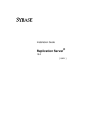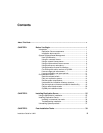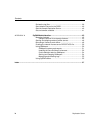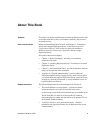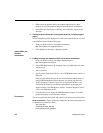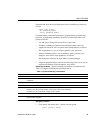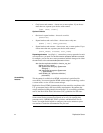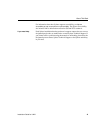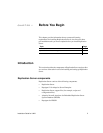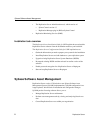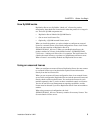
About This Book
Installation Guide for UNIX ix
Examples that show the use of Replication Server commands are printed as
follows:
alter user louise
set password hFE5t
verify password hFE5t
Command names, command option names, program names, program flags,
keywords, configuration parameters, functions, and stored procedures are
printed as follows:
•Use
alter user to change the password for a login name.
• Variables, parameters to functions and stored procedures, and user-
supplied words are in italics in syntax and in paragraph text, as follows:
The
set password new_passwd clause specifies a new password.
• Names of database objects, such as databases, tables, columns, and
datatypes, are in italics in paragraph text, as follows:
The
base_price column in the Items table is a money datatype.
• Names of replication objects, such as function-string classes, error classes,
replication definitions, and subscriptions, are in italics.
Syntax conventions Syntax formatting conventions are summarized in
Table 1. Examples combining these elements follow.
Table 1: Syntax formatting conventions
Obligatory choices
• Curly braces and vertical bars – choose only one option.
{red | yellow | blue}
Key Definition
variable Variables (words standing for values that you fill in) are in italics.
{ } Curly braces mean you must choose at least one of the enclosed options. Do not include braces in the
command.
[ ] Brackets mean you may choose or omit enclosed options. Do not include brackets in the command.
| Vertical bars mean you may choose no more than one option (enclosed in braces or brackets).
, Commas mean you may choose as many options as you need (enclosed in braces or brackets).
Separate your choices with commas, to be typed as part of the command.
Commas may also be required in other syntax contexts.
( ) Parentheses are to be typed as part of the command.
... An ellipsis (three dots) means you may repeat the last unit as many times as you need. Do not include
ellipses in the command.



